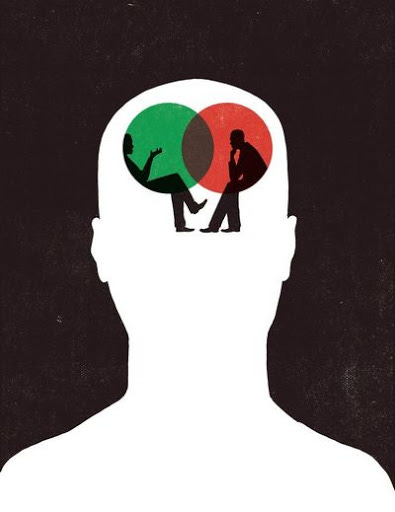Tuning in to inner speech
How would you describe your inner speech? How often are you aware of it? What type of roles does it play in your life?

Aside from visual reading, the same survey revealed that about 70% of survey participants describe being able to hear characters’ voices while reading.
Among writers, about 15% even report speaking with their characters directly:
“They sometimes tell me that what I have in mind for them isn’t right – that they would never behave or speak that way.”
One explanation for these experiences is inner speech, or the inner monologue or dialogue that many people have when thinking verbally. It’s often described as an internal narrator, the voice inside your head, or your stream of consciousness.

Inner speech varies heavily from person to person. There are people who report hearing their inner speech all the time, whereas others are barely conscious of it at all.
Among other functions, it plays an important role in self-regulation, problem solving, and planning. There are also a few different types of inner speech:
- Narration. An inner monologue — for example, you might be rehearsing an important conversation in your head.
- Conversational. A dialogue with yourself — like when you’re rehashing an old argument in the shower.
- Self-reflective. Encompasses your inner critic, motivational coach, and self-evaluations of your mental state.
- Simulating others. Hearing the voices of other people — like hearing your parents’ voice saying “you shouldn’t do that”.
Whereas the first three types of inner speech are fairly common (reported by more than 75% of people), only about 25% of people experience the presence of other people (real or imaginary) in their inner speech.
To clarify, this is different from deliberately imagining a person saying something. It’s more involuntary and intuitive, like being able to anticipate how a friend is likely to respond because you know them well.

As with real people, writers “get to know” their characters over time:
“First, there are the initial stages where the writer consciously determines what the characters do and say. Yet after a certain point, the writer’s greater familiarity with the characters provides the same kind of immediate and intuitive sense of what they would do or say that often applies to our imaginings of real people.”
It’s possible that these experiences allow writers to build more realistic characters, but this type of inner speech is not strictly necessary for writing great fiction.
In closing, ask yourself: How would you describe your inner speech? How often are you aware of it? What type of roles does it play in your life?
For more on inner speech, check out this article or this research paper (more rigorous).
Friday Brainstorm Newsletter
For more, join 300+ curious people subscribed to the Friday Brainstorm newsletter. It’s one email a month with the most interesting ideas I've found related to science and health.